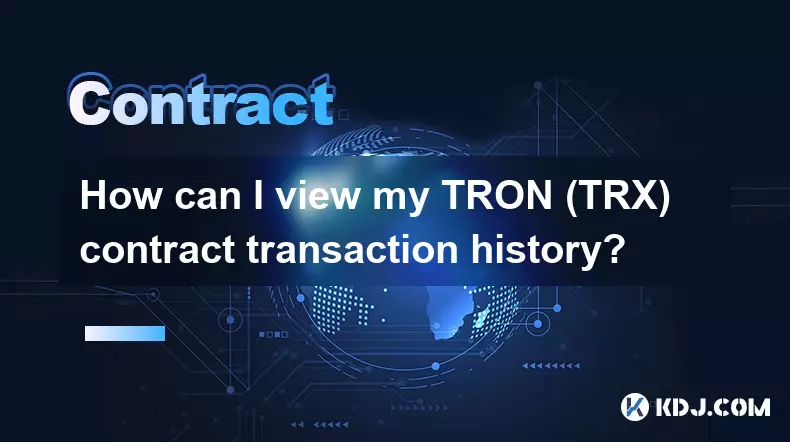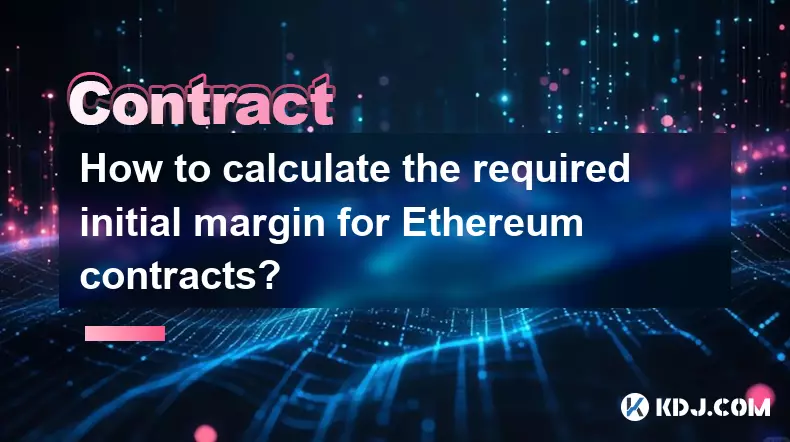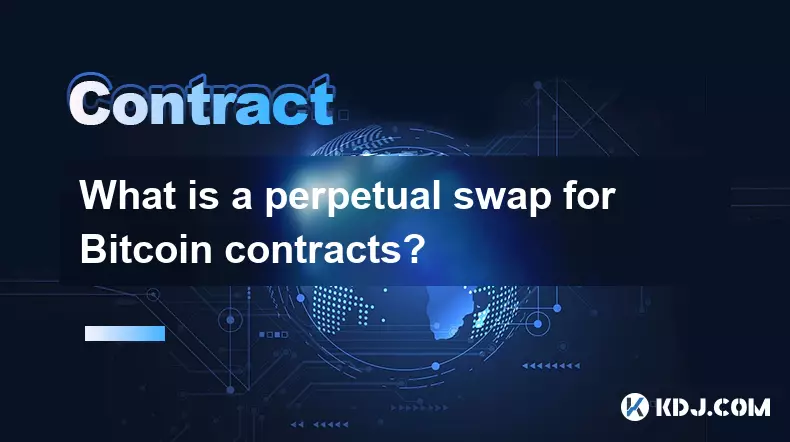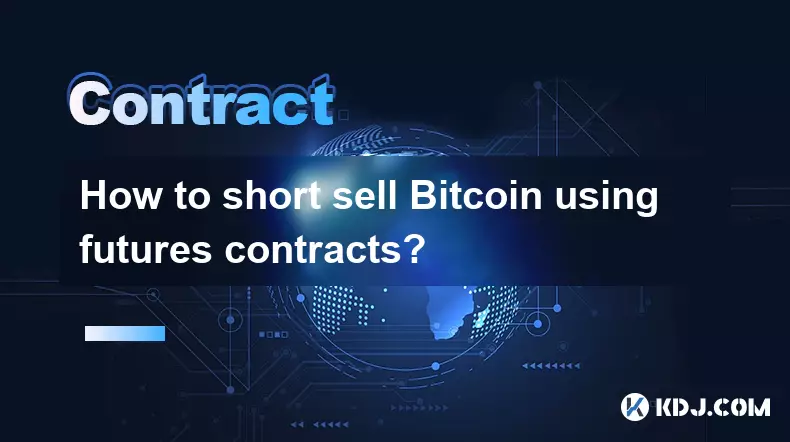-
 bitcoin
bitcoin $114320.977035 USD
-0.40% -
 ethereum
ethereum $4152.439985 USD
-1.75% -
 tether
tether $1.000111 USD
-0.04% -
 xrp
xrp $2.843037 USD
-1.63% -
 bnb
bnb $1013.349380 USD
-1.62% -
 solana
solana $208.362767 USD
-2.10% -
 usd-coin
usd-coin $0.999783 USD
0.00% -
 dogecoin
dogecoin $0.232559 USD
-1.00% -
 tron
tron $0.333491 USD
-1.09% -
 cardano
cardano $0.806310 USD
0.19% -
 hyperliquid
hyperliquid $45.023720 USD
-1.59% -
 ethena-usde
ethena-usde $1.000819 USD
-0.06% -
 chainlink
chainlink $21.241249 USD
-2.11% -
 avalanche
avalanche $30.035416 USD
-0.66% -
 stellar
stellar $0.364984 USD
-2.05%
How can I view my TRON (TRX) contract transaction history?
Use Tronscan or TronLink to view TRON contract transaction history, including token transfers, dApp interactions, and failed transactions with detailed logs.
Sep 30, 2025 at 04:18 pm

Accessing TRON (TRX) Contract Transaction History
1. Navigate to a blockchain explorer designed for the TRON network, such as Tronscan or TronGrid. These platforms allow users to search for wallet addresses and view all associated transactions, including those involving smart contracts.
2. Enter your TRON wallet address into the search bar of the explorer. Once submitted, the platform will display a detailed list of all incoming and outgoing transactions linked to that address.
3. Look for a tab labeled “Transactions,” “Contract Transactions,” or “Internal Transactions” depending on the interface. This section specifically logs interactions with smart contracts, such as token transfers, decentralized application (dApp) usage, or participation in token sales.
4. Each entry typically includes the transaction hash, block number, timestamp, sender, receiver, amount, and contract address involved. Clicking on an individual transaction reveals further technical details like energy consumption, bandwidth usage, and any event logs generated by the contract.
5. For advanced filtering, some explorers offer options to sort by transaction type, date range, or specific contract addresses. This is useful when tracking activity related to a particular dApp or token standard like TRC-10 or TRC-20.
Using Wallet Applications to Monitor Contract Activity
1. Install a compatible TRON wallet such as TronLink (browser extension or mobile app) or Trust Wallet. These wallets integrate directly with the TRON blockchain and provide user-friendly interfaces for managing assets and viewing transaction records.
2. After connecting your wallet to the TRON network, navigate to the transaction history section. Most wallets automatically pull data from public nodes and display recent movements of TRX and TRC-based tokens.
3. When a transaction involves a smart contract—such as swapping tokens on JustSwap or staking on Sun.io—the wallet may label it accordingly or show the name of the interacting dApp if metadata is available.
4. Some wallets allow you to export transaction history in CSV format. This can be helpful for record-keeping, tax reporting, or analyzing frequent interactions with specific contracts.
5. Enable push notifications within the wallet settings to receive real-time alerts whenever a contract executes an action using your address, such as approving token spending or claiming rewards.
Analyzing Smart Contract Interactions via API Tools
1. Developers or technically inclined users can query the TRON blockchain directly using RESTful APIs provided by TronGrid or BitGo. These services return structured JSON responses containing comprehensive transaction data.
2. Construct an API request using your wallet address and specify parameters such as limit, order, and whether to include contract-related events. For example: https://api.trongrid.io/v1/accounts/{your_address}/transactions?limit=200&only_to=true.
3. Filter results for transactions where the “contract_type” field indicates interaction with a smart contract (e.g., TriggerSmartContract). This helps isolate actions like voting in governance protocols or minting NFTs on supported marketplaces.
4. Use scripting languages like Python or Node.js to automate retrieval and parsing of contract events over time. Libraries such as tronweb simplify this process by offering built-in methods to decode input data and extract function calls made from your address.
5. Store retrieved data locally or in cloud storage for long-term analysis. Patterns in contract usage can reveal insights about engagement levels with certain dApps or potential security risks from repeated approvals to unknown contracts.
Frequently Asked Questions
How do I verify if a transaction involved a smart contract?Check the transaction details on Tronscan. If the “Contract Type” shows “TriggerSmartContract” or the recipient address belongs to a known dApp, it indicates smart contract interaction.
Can I see failed contract transactions in my history?Yes. Failed transactions appear in the list with a status marked as “REVERT opcode executed” or similar. They consume resources like energy but do not complete the intended action.
Why don’t I see token transfers in my standard transaction list?Token transfers occur through separate contract events. On Tronscan, switch to the “Token Transfers” tab to view movements of TRC-20 or TRC-721 tokens linked to your address.
Is it possible to track pending contract transactions?Pending transactions are visible under the “Pending” section on blockchain explorers. These are transactions broadcasted to the network but not yet confirmed in a block.
Disclaimer:info@kdj.com
The information provided is not trading advice. kdj.com does not assume any responsibility for any investments made based on the information provided in this article. Cryptocurrencies are highly volatile and it is highly recommended that you invest with caution after thorough research!
If you believe that the content used on this website infringes your copyright, please contact us immediately (info@kdj.com) and we will delete it promptly.
- BlockDAG, DOGE, HYPE Sponsorship: Crypto Trends Shaping 2025
- 2025-10-01 00:25:13
- Deutsche Börse and Circle: A StableCoin Adoption Powerhouse in Europe
- 2025-10-01 00:25:13
- BlockDAG's Presale Buzz: Is It the Crypto to Watch in October 2025?
- 2025-10-01 00:30:13
- Bitcoin, Crypto, and IQ: When Genius Meets Digital Gold?
- 2025-10-01 00:30:13
- Stablecoins, American Innovation, and Wallet Tokens: The Next Frontier
- 2025-10-01 00:35:12
- NBU, Coins, and Crypto in Ukraine: A New Yorker's Take
- 2025-10-01 00:45:14
Related knowledge

What is the maintenance margin for Bitcoin contracts?
Oct 02,2025 at 01:36am
Decentralized Exchanges Gain Momentum in 20241. Decentralized exchanges (DEXs) have seen a significant rise in trading volume, surpassing centralized ...

How to calculate the required initial margin for Ethereum contracts?
Oct 01,2025 at 06:01am
Understanding Initial Margin in Ethereum Futures1. The initial margin for Ethereum futures contracts represents the minimum amount of capital a trader...

What is a perpetual swap for Bitcoin contracts?
Oct 01,2025 at 08:18am
Understanding Perpetual Swaps in Bitcoin Trading1. A perpetual swap is a type of derivative contract that allows traders to speculate on the price of ...

What is the best platform for trading SOL contracts?
Oct 01,2025 at 06:36am
Understanding the Role of Decentralized Exchanges in Modern Crypto Trading1. Decentralized exchanges (DEXs) have reshaped how traders interact with di...

How to short sell Bitcoin using futures contracts?
Oct 01,2025 at 02:54am
Understanding the Role of Decentralized Exchanges in Crypto Trading1. Decentralized exchanges (DEXs) have become a cornerstone of the cryptocurrency e...

Are PEPE contracts a good way to trade volatility?
Oct 01,2025 at 04:18am
Understanding PEPE Contracts in the Cryptocurrency Market1. PEPE contracts, derived from the broader meme coin movement, have gained attention due to ...

What is the maintenance margin for Bitcoin contracts?
Oct 02,2025 at 01:36am
Decentralized Exchanges Gain Momentum in 20241. Decentralized exchanges (DEXs) have seen a significant rise in trading volume, surpassing centralized ...

How to calculate the required initial margin for Ethereum contracts?
Oct 01,2025 at 06:01am
Understanding Initial Margin in Ethereum Futures1. The initial margin for Ethereum futures contracts represents the minimum amount of capital a trader...

What is a perpetual swap for Bitcoin contracts?
Oct 01,2025 at 08:18am
Understanding Perpetual Swaps in Bitcoin Trading1. A perpetual swap is a type of derivative contract that allows traders to speculate on the price of ...

What is the best platform for trading SOL contracts?
Oct 01,2025 at 06:36am
Understanding the Role of Decentralized Exchanges in Modern Crypto Trading1. Decentralized exchanges (DEXs) have reshaped how traders interact with di...

How to short sell Bitcoin using futures contracts?
Oct 01,2025 at 02:54am
Understanding the Role of Decentralized Exchanges in Crypto Trading1. Decentralized exchanges (DEXs) have become a cornerstone of the cryptocurrency e...

Are PEPE contracts a good way to trade volatility?
Oct 01,2025 at 04:18am
Understanding PEPE Contracts in the Cryptocurrency Market1. PEPE contracts, derived from the broader meme coin movement, have gained attention due to ...
See all articles










































































